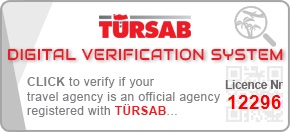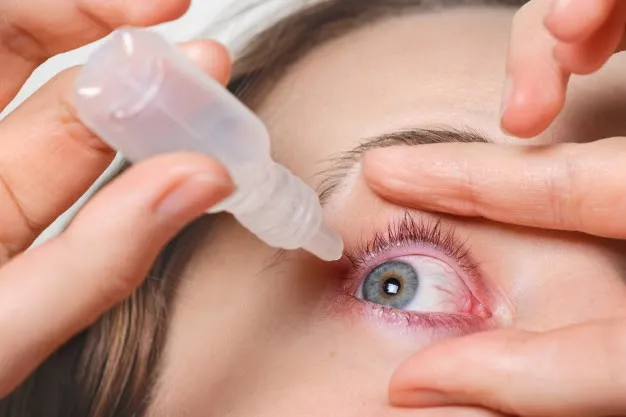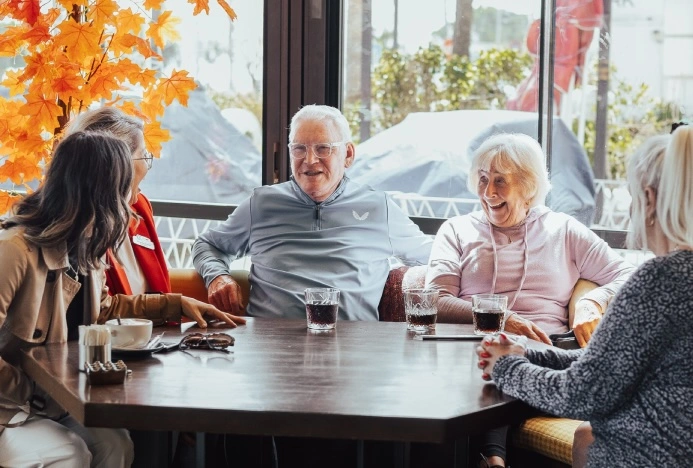Following LASIK surgery, while most patients experience improved vision, some may develop photophobia symptoms post-LASIK treatment, manifesting as heightened light sensitivity. This can cause discomfort or pain in bright conditions, affecting daily life during recovery. Understanding the causes, symptoms, and management of this post-operative issue is vital for effective care.
Table of Contents
Understanding Photophobia After LASIK
Photophobia, derived from Greek words meaning ‘light’ and ‘fear,’ is not a disease itself but rather a symptom of an underlying issue. After LASIK surgery, the cornea undergoes significant remodeling. The excimer laser reshapes the corneal tissue to correct refractive errors, which involves creating a corneal flap and altering the underlying stroma. This process, while precise, can transiently affect the delicate network of corneal nerves responsible for transmitting sensory information. Consequently, the eye’s natural response to light can be altered, leading to varying degrees of light sensitivity.
Causes of Post-LASIK Photophobia
Several factors can contribute to the development of photophobia after LASIK. Identifying these causes is the first step toward effective management. The primary culprits often include:
- Corneal Nerve Damage and Regeneration: During LASIK, the creation of the corneal flap severs many corneal nerves. These nerves play a vital role in regulating tear production and conveying sensation, including light perception. As these nerves regenerate, the eye’s sensitivity can be temporarily altered, potentially leading to increased light intolerance. Research published in the *Journal of Refractive Surgery* indicates that while corneal nerve density recovers over time post-LASIK, the regeneration process can be incomplete or lead to altered nerve function, which directly correlates with symptoms like dry eye and photophobia. This emphasizes the importance of supporting optimal healing.
- Dry Eye Syndrome (DES): Post-LASIK dry eye is a common side effect, affecting a significant number of patients. A healthy tear film acts as a smooth, protective layer over the cornea. When the tear film is compromised, the ocular surface becomes irritated and exposed, making the eye more vulnerable to environmental stimuli, including light. The interaction between dry eyes and light sensitivity is bidirectional: dry eyes can cause photophobia, and photophobia can exacerbate discomfort associated with dry eyes.
- Inflammation: Any surgical procedure carries a risk of inflammation. While controlled inflammation is part of the healing process, excessive or prolonged inflammation can irritate ocular tissues, leading to symptoms such as pain and light sensitivity. Post-operative anti-inflammatory drops are typically prescribed to mitigate this risk.
- Residual Refractive Error or Irregular Astigmatism: In some cases, minor residual refractive errors or surgically induced irregular astigmatism can cause visual disturbances like glare, halos, and starbursts, which are often perceived as worsened in bright light, thus mimicking or contributing to photophobia. These optical aberrations can make the eye more sensitive to light discrepancies.
- Pupil Dilation: Immediately after surgery, pupils may remain slightly dilated due to medications or the eye’s natural response to trauma. A larger pupil allows more light to enter the eye, increasing perceived brightness and potential discomfort.
Recognising the photophobia symptoms post-LASIK treatment
Recognizing the specific symptoms is essential for proper diagnosis and management. Patients experiencing photophobia typically report:
- Discomfort or pain when exposed to normal or bright light.
- Squinting or closing eyes in well-lit environments.
- Headaches, particularly ocular headaches or migraines, triggered or worsened by light.
- Excessive tearing (epiphora) as a reflex response to light.
- Feeling a constant need to wear sunglasses, even indoors or on overcast days.
- Difficulty driving at night due to glare from headlights and streetlights.
- General eye irritation, redness, or a foreign body sensation.
These symptoms can significantly impact a patient’s quality of life, making it difficult to perform routine tasks, work on computers, or enjoy outdoor activities. Early identification and intervention are paramount.
Managing Photophobia After LASIK
Effective management of post-LASIK photophobia often involves a multi-faceted approach, addressing both the immediate symptoms and the underlying causes. Patients should always follow their surgeon’s specific post-operative instructions rigorously.
Immediate Post-Operative Care
In the initial days and weeks following LASIK, managing light sensitivity is largely about protective measures and medication adherence:
- Wear Sunglasses: High-quality sunglasses that block 100% of UVA and UVB rays are indispensable. They should be worn outdoors and even indoors in brightly lit environments, especially during the first few weeks after surgery. Polarized lenses can further reduce glare.
- Use Prescribed Eye Drops: Adhere strictly to the schedule for anti-inflammatory and antibiotic eye drops. These are crucial for preventing infection, controlling inflammation, and promoting healing. Lubricating eye drops (artificial tears) are also vital for alleviating dry eye symptoms, which are often linked to photophobia. Learn more about general eye treatments in Turkey and their associated care.
- Rest Your Eyes: Avoid prolonged screen time or tasks that require intense visual focus, especially in the first few days. Allowing your eyes to rest promotes healing and reduces strain.
- Control Your Environment: Dim lights at home and work. Consider using anti-glare screens for digital devices. Creating a visually comfortable environment can significantly reduce discomfort.
Long-Term Management Strategies
If photophobia symptoms post-LASIK treatment persist beyond the initial recovery period, more targeted strategies may be necessary.
- Optimizing Dry Eye Treatment: Since dry eye is a major contributor to photophobia, aggressive management of DES is often beneficial. This can include frequent use of preservative-free artificial tears, punctal plugs to retain tears, prescription eye drops (e.g., cyclosporine or lifitegrast) to increase natural tear production, and warm compresses. Addressing dry eye proactively can lead to substantial improvement in light sensitivity. Exploring comprehensive eye treatments in Turkey can provide access to advanced diagnostic and therapeutic options for persistent dry eye.
- Nutritional Support: Omega-3 fatty acid supplements have been shown to improve tear film quality and reduce inflammation, which can indirectly help with photophobia associated with dry eyes. Consult with your doctor before starting any new supplements.
- Specialty Lenses: For individuals with persistent glare, halos, or residual refractive errors, specialty contact lenses (e.g., rigid gas permeable lenses) or prescription glasses with anti-glare coatings or tinted lenses (such as FL-41 tint) can be considered. These can selectively filter specific wavelengths of light that exacerbate photophobia.
- Addressing Ocular Inflammation: If inflammation is a root cause, your surgeon may prescribe a short course of stronger anti-inflammatory medications. It is important to rule out other inflammatory conditions that might be contributing.
- Pupil-Modulating Drops: In rare cases, if excessive pupil dilation is identified as a primary cause, your surgeon might consider very low-dose, short-term pupil-constricting drops, though this is less common and requires careful oversight due to potential side effects.
When to Seek Medical Attention
While some degree of light sensitivity is normal after LASIK, certain signs warrant immediate medical consultation. These include:
- Sudden onset or significant worsening of photophobia.
- Intense eye pain not alleviated by over-the-counter pain relievers.
- Marked decrease in vision or blurry vision that does not improve.
- Severe redness or discharge from the eye.
- New or worsening glare, halos, or starbursts.
- Any visual symptoms that feel highly unusual or concerning.
These symptoms could indicate a complication requiring prompt intervention, such as infection, significant inflammation, or corneal flap issues. Your surgeon is the best resource to evaluate and address these concerns.
Comparison of Post-LASIK Light Sensitivity
Here’s a general comparison of factors related to light sensitivity after LASIK:
| Factor | Mild/Temporary Photophobia | Moderate/Persistent Photophobia |
|---|---|---|
| Onset | Days to a few weeks post-op | Weeks to months post-op |
| Duration | Resolves within 1-3 months | Can persist for 6+ months or indefinitely |
| Associated Causes | Normal healing, mild dry eye, initial inflammation | Significant dry eye, slow nerve regeneration, irregular astigmatism, chronic inflammation |
| Management | Sunglasses, artificial tears, prescribed drops | Aggressive dry eye treatment, specialty lenses, nutritional support, re-evaluation |
| Impact on Life | Minimal, temporary inconvenience | Noticeable, impacts daily activities and quality of life |
CK Health Turkey: Your Partner for Advanced Eye Care
For international patients, especially those from the United Kingdom seeking high-quality, affordable medical treatments, CK Health Turkey stands out as a premier destination. We understand the anxieties associated with eye surgery and post-operative recovery, including managing photophobia symptoms post-LASIK treatment. Our state-of-the-art facilities, highly experienced ophthalmologists, and dedicated patient support teams ensure a seamless and reassuring experience from initial consultation through to comprehensive aftercare. We offer a full spectrum of eye care services, utilizing the latest diagnostic and treatment technologies to provide optimal outcomes. Whether you’re considering LASIK or need specialized care for post-operative complications or other vision concerns, CK Health Turkey is committed to your ocular health and well-being. We pride ourselves on transparent communication, personalized treatment plans, and exceptional patient satisfaction. To explore your options and learn more about our world-class medical services, we encourage you to get in touch for a consultation or visit our website for further details on all available treatments.
Price Comparison: LASIK Surgery Costs
Many patients from the UK choose Turkey for medical procedures due to significant cost savings without compromising on quality. Here’s an illustrative comparison for LASIK and related services:
| Service/Item | Turkey Price (GBP) | UK Price (GBP) |
|---|---|---|
| Standard LASIK | £1,500 – £2,500 | £3,000 – £6,000 |
| Custom LASIK (Wavefront) | £2,000 – £3,000 | £4,000 – £7,500 |
| Post-LASIK Follow-up (Year 1) | Included/Minimal | £200 – £500 |
| Advanced Dry Eye Treatment | £500 – £1,500 | £1,500 – £3,000 |
| Specialty Lenses for Photophobia | £150 – £400 | £300 – £800 |
*Note: These are estimated prices and can vary based on the clinic, surgeon’s experience, specific technology used, and individual patient needs.*
FAQs
Is photophobia after LASIK normal?
Yes, some degree of light sensitivity is a common and normal part of the healing process after LASIK. It usually subsides within a few weeks to a few months as the eyes recover.
How long does light sensitivity last after LASIK?
The duration varies. For most, it resolves within the first 1-3 months. For a smaller percentage, it might persist for 6 months or longer, especially if associated with significant dry eye or slower corneal nerve regeneration.
Can photophobia lead to permanent damage?
Generally, no. While uncomfortable, typical post-LASIK photophobia is a transient symptom of healing. However, severe or persistent symptoms warrant medical attention to rule out complications that *could* lead to damage if left unaddressed.
Are there any specific sunglasses recommended for post-LASIK?
Opt for sunglasses that offer 100% UVA and UVB protection. Polarized lenses are highly recommended as they effectively reduce glare, which can be particularly bothersome for those with light sensitivity.
What role does dry eye play in post-LASIK photophobia?
Dry eye syndrome is a significant contributor to post-LASIK photophobia. A compromised tear film leaves the ocular surface exposed and irritated, increasing sensitivity to light. Treating dry eye is often crucial for managing light sensitivity.
When should I be concerned about photophobia after LASIK?
You should be concerned and contact your surgeon if your photophobia is severe, worsens suddenly, is accompanied by intense pain, a significant drop in vision, or any signs of infection like redness or discharge. These could indicate a complication requiring immediate attention.
Can diet affect my light sensitivity after LASIK?
While not a direct cure, certain nutritional factors, such as adequate intake of Omega-3 fatty acids, can support overall eye health and improve tear film quality, which may indirectly help in managing dry eye and associated light sensitivity. Always discuss dietary changes or supplements with your doctor.



